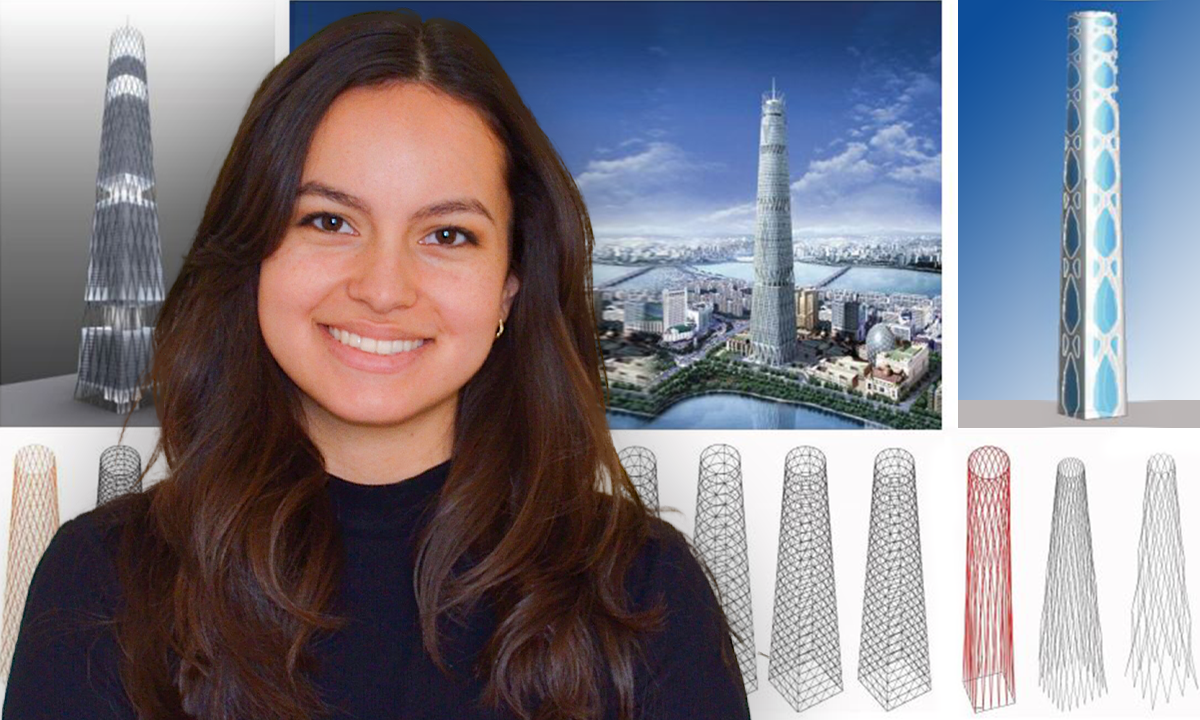
 Emily Alcazar |
By Polly Ouellette
Georgia Tech College of Engineering
Emily Alcazar’s work in structural topology optimization creates buildings that mimic natural beauty
Designing a building is a prime application for optimization. Civil engineers and architects must work together in order to balance the engineer’s need for stability and efficiency with an architect’s vision for a beautiful building. But, finding a perfect compromise between form and function can seem impossible.
When done correctly, this delicate balance results in a structure that is not only strong and functional but may be widely appreciated for years to come. Emily Alcazar, an 18-year-old Ph.D. student in the School of Civil and Environmental Engineering, wants to enable engineers and architects to create such buildings through structural topology optimization.
“You might not think that these projects are that big of a deal, but they impact people's lives on a daily basis,” said Alcazar. “Streets, parks, community centers, homes. Making these beyond just bare minimum functionality and making them aesthetically pleasing will make everyone’s lives a bit better."
Alcazar is a recipient of the prestigious National Science Foundation Graduate Research Fellowship, which will provide her with professional development resources and opportunities to collaborate with researchers internationally. At 18, Alcazar says that she doesn’t think her young age impacts her studies much at all – she’s simply happy that graduate school is giving her the opportunity to spend her time focusing on research she truly loves.
|
Tower Models |
She and her fellow researchers in structural topology optimization use algorithms to determine the ideal layout of a structure – one that uses minimal materials, can withstand environmental factors, is structurally sound and strong and complies with safety guidelines.
Incredibly, the outputs of these algorithms are often beautiful and reminiscent of natural structures, like trees or spider webs.
“What we're doing is we're using complex algorithms to solve for complicated and realistic structural design problems and consequently we end up getting architecturally aesthetic, biomimetic building designs,” said Alcazar.
Structural design that takes inspiration from nature isn’t anything new. One of Alcazar’s favorite examples is the architect Antoni Gaudi, who was influenced by the movement of water and the shapes of trees, seen heavily in his design of Sagrada Familia.
“Now, people from all over the world go to see his work, said Alcazar. “It’s a great example of making something more than functional, making it beautiful.”
Smaller-scale structures such as car parts and even airplane wings have already been designed via structural topology optimization and manufactured through additive manufacturing, or 3D printing. During her first year of her Ph.D. program, Alcazar has focused on developing a better 3D printer, called a grayscale Digital Light Processing (g-DLP) 3D printer. The g-DLP printer uses ultraviolet light to solidify resin and form smooth transitions between different materials.
According to Alcazar, perfecting this technique would be a big step towards making structural topology optimization feasible in the construction industry. She also hopes to advance the algorithms used in her field so that design firms and engineers all over the world can begin to make beautiful and efficient buildings.
Alcazar was drawn to Georgia Tech because of her admiration for the structural topology work of Glaucio Paulino, Raymond Allen Jones chair and professor of civil engineering. Someday, she too hopes to work in academia and teach students to think more creatively.
Alcazar thinks that art and engineering are still a bit too far apart. Through structural topology optimization, which merges the two worlds, she hopes to eventually see a world where the details of the buildings she looks at resemble trees reaching high or the waves of the sea.
